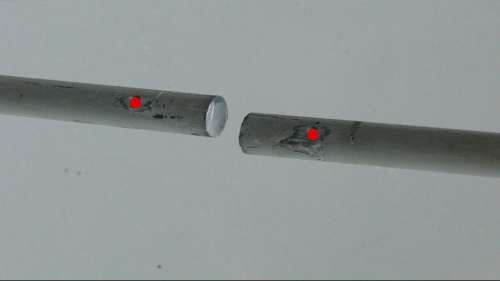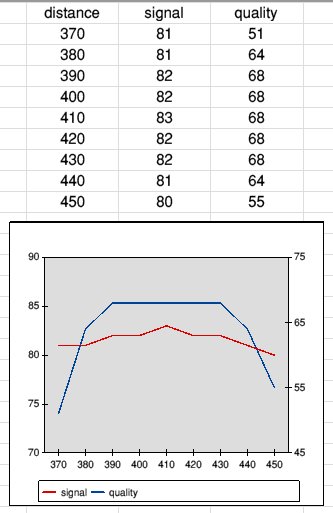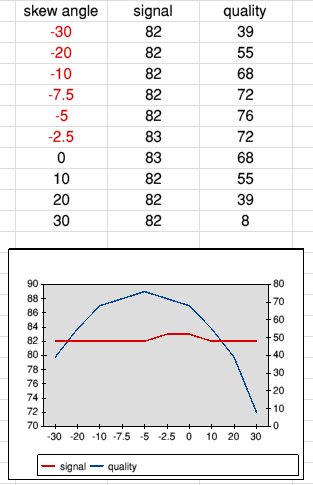
I obtained some 16mm OD, 14mm ID steel tube and made three of these 'flutes'.
There are 10 holes spaced ½ inch apart, then a gap of 2 inches and another hole.


The further apart the screws, the greater the dish-to-LNB distance.


The signal quality "peaked" at 68%, but with a wide plateau.
I set the distance at 410mm.
This is very close to the dish design dimension of 420mm (1 metre dish f/D ratio of 0.42), before going on to the next stage of adjusting the LNB skew angle.

The signal quality readings proved much more useful.
Note that my zero degree skew is not necessarily zero with respect to the satellite. It is just my own "mark" so I could make adjustments relative to this "zero".
The LNB has marks moulded into the plastic at 5 degree intervals from -30 to +30 degrees. There was an obvious peak, in the symmetrical curve, at -5 degrees. This is where the LNB is now set.